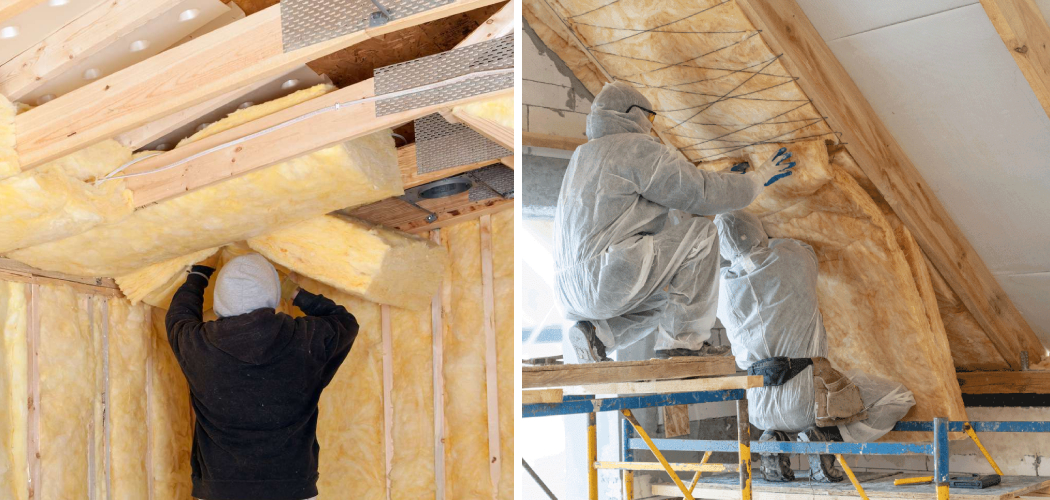Are you trying to find out how to insulate your ceiling without an attic? If so, you’re not alone. Many homeowners are unaware that they can still effectively insulate their ceilings even without access to an attic space. Here we will discuss how to insulate ceiling without attic.
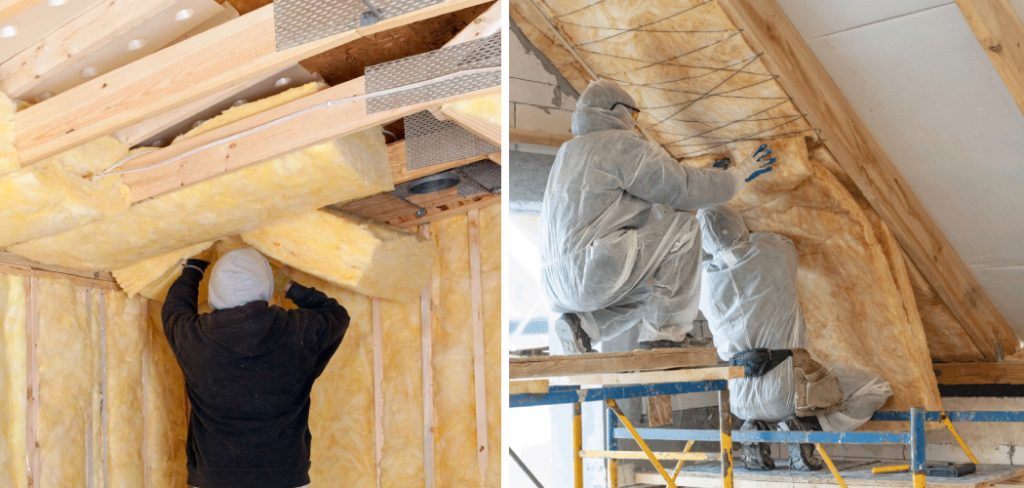
Battling with an insulation project? Don’t have access to an attic? If you’re trying to figure out how to insulate your ceilings without the help of an attic, you’ve come to the right place. In this blog post, we’ll dive deep into effective strategies and helpful tips for successfully insulating your ceiling in even the most unique living situations.
We’ll explore why insulation is important, which types are best for your space, and plenty more — read on to find out everything you need to know about insulating a ceiling without access to an attic!
What are the Benefits of Insulating Your Ceiling?
Insulating your ceiling is important for a variety of reasons. First, insulation helps keep the warm air inside during winter and the cool air in during summer. This is especially important when it comes to saving energy costs.
Another benefit of insulating your ceiling without an attic is that it can help reduce sound transfer between floors of a multi-story home. The insulation helps absorb some of the noise created by footsteps, conversations, TVs, music, and other everyday sounds.
Finally, insulation protects your ceilings from moisture damage and mold growth caused by condensation build-up. It also serves as an additional fire barrier for added safety measures if there’s ever a fire emergency in your home.
What Will You Need?
Before starting your insulation project, it’s important to make sure that you have the necessary materials. Some of the most common supplies required for successful ceiling insulation include:
- Fiberglass or Mineral Wool Batting
- Rigid Insulation Boards
- Wall Anchors and Screws
- Spray Foam Insulation
- Safety Gear
Once you’ve gathered all the necessary materials, it’s time to begin the insulation process.
10 Easy Steps on How to Insulate Ceiling Without Attic
Step 1. Test for Air Flow:
Before attempting any insulation work, make sure that your ceiling is free of any air leaks or drafts. This can be checked with a standard blower door test and infrared camera. If there is any airflow, it will need to be addressed before installing insulation.
Step 2. Install Rigid Insulation Board:
Next, you’ll install rigid insulation boards. These will be placed directly against the ceiling joists for maximum efficiency. Make sure to secure the insulation with wall anchors and screws to withstand weight and temperature fluctuations.
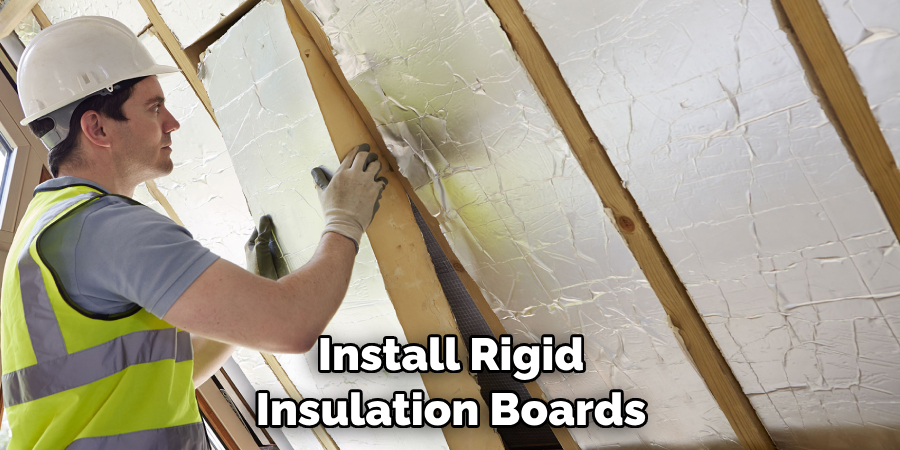
Step 3. Fiberglass or Mineral Wool Batting:
Once the rigid insulation is in place, you’ll need to add a layer of fiberglass or mineral wool batting on top of it. This material acts as an extra barrier between your home and outside temperatures, helping to keep your space comfortable all year round. Don’t forget to wear safety gear when handling fiberglass.
Step 4. Spray Foam Insulation:
Spray foam insulation is a great option for any ceiling insulation project. This type of insulation can fill in all the cracks and crevices, ensuring a tight seal around your home’s exterior. If you choose to use spray foam, ensure the material is UL rated.
Step 5. Install Wall Anchors:
Once you have applied the spray foam insulation, it’s time to install wall anchors into the joists. These will be used to hold the top layer of insulation in place and ensure that everything is secure. As with any insulation project, make sure to wear safety gear and read the instructions carefully before beginning.
Step 6. Add Top Layer of Insulation:
Now that your ceiling is prepped, it’s time to add the final insulation layer. This could include fiberglass or mineral wool batting or even rigid boards, depending on what you plan to use. Make sure that you fill in any gaps with spray foam and secure everything with wall anchors.
Step 7. Install Vapor Barrier:
Once the insulation is installed, you must install a vapor barrier. This will help keep moisture out of your home and prevent mold or mildew from forming in your insulated space. You can use standard plastic sheeting or even spray foam if needed.
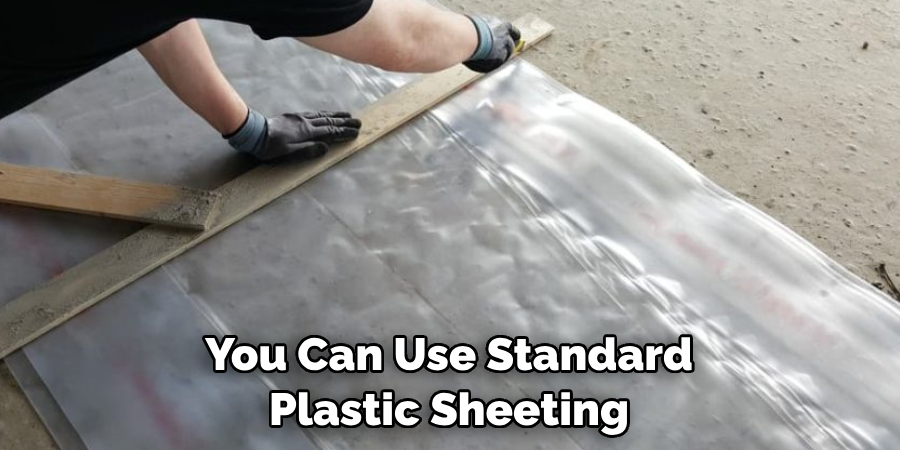
Step 8. Reinforce Any Weak Areas:
Check for weak spots by putting pressure on each joist and inspecting the area around it. If necessary, reinforce any weak areas with additional wall anchors or fiberglass batting. Be careful not to layer the insulation too heavily, as this may cause it to shift and become less effective.
Step 9. Seal All Openings:
Now that you have finished installing all of the insulation, it’s time to seal up any openings. Use caulking and weather stripping to seal around any windows or doors located on your home’s ceiling level. Keep an eye out for any drafts or air leaks, and make sure to address them before moving on.
Step 10. Check for Leaks:
Finally, it’s time to check for any air leaks or drafts in your newly insulated space. To do this, you can use a blower door test or an infrared camera to help you find areas that need attention. Once all the leaks have been identified and corrected, you’ll be ready to enjoy your properly insulated space’s comfort and energy savings!
By following these ten steps, you can insulate your ceiling without access to an attic. With proper insulation in place, you can enjoy a more comfortable living space and energy savings over time.
5 Additional Tips and Tricks
1. If you’re looking to insulate a ceiling without an attic, one of the best options is to use spray foam insulation. This type of insulation is easy to apply and will provide a much better thermal barrier than other types of insulation.
2. Another great option for insulating a ceiling without an attic is to use rigid foam board insulation. This type of insulation comes in large sheets that can be cut to fit the size of your ceiling. It’s also highly energy-efficient and has good soundproofing properties.
3. If you’re looking for insulated ceiling tiles, there are some available that contain foil or foam backing, which provides extra thermal protection against heat transfer through the roof into the room below it.
4. For areas where attic access isn’t possible, fiberglass batting can be used as an effective way to add extra insulation between the joists. This relatively inexpensive material can be easily installed between the studs and joists of your ceiling.
5. One final option for insulating a ceiling without an attic is to use spray-on insulation. Spray-on insulation comes in various forms and offers excellent thermal protection as well as soundproofing capabilities. It’s also easy to apply, so it’s perfect for DIY projects.
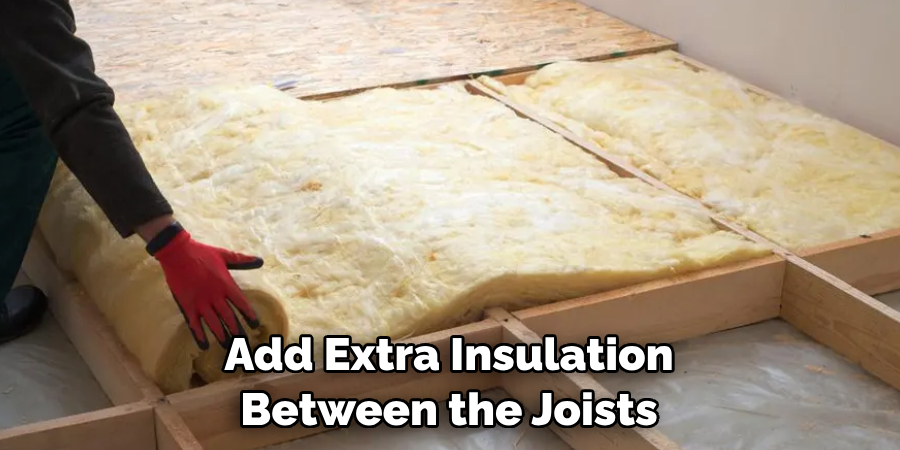
By understanding how to insulate a ceiling without an attic, you’ll be able to keep your home warm, cozy, and energy efficient all year round! With these tips and tricks, you’ll be well on your way to ensuring your ceilings are insulated properly and efficiently.
5 Things You Should Avoid
1. Don’t try and insulate a ceiling without attic access using loose fill insulation. Loose fill insulation won’t provide the same level of protection as other methods, and can be difficult to install in places with limited space.
2. Avoid using paper-faced insulation on ceilings that don’t have attic space above them. This type of insulation is more vulnerable to moisture, which can lead to mold growth and deterioration over time.
3. Refrain from using fiberglass batting on ceilings without an attic, as this material doesn’t provide adequate thermal protection against heat transfer through the roof into the room below it.
4. Do not use tar paper or felt paper as a way to insulate a ceiling without an attic. This type of material is not designed for insulation and won’t provide the same level of protection as other methods.
5. Avoid using dense foam or other solid materials to insulate ceilings without an attic space. These types of materials don’t allow air to move through them, which can lead to condensation and mold growth if moisture gets trapped.
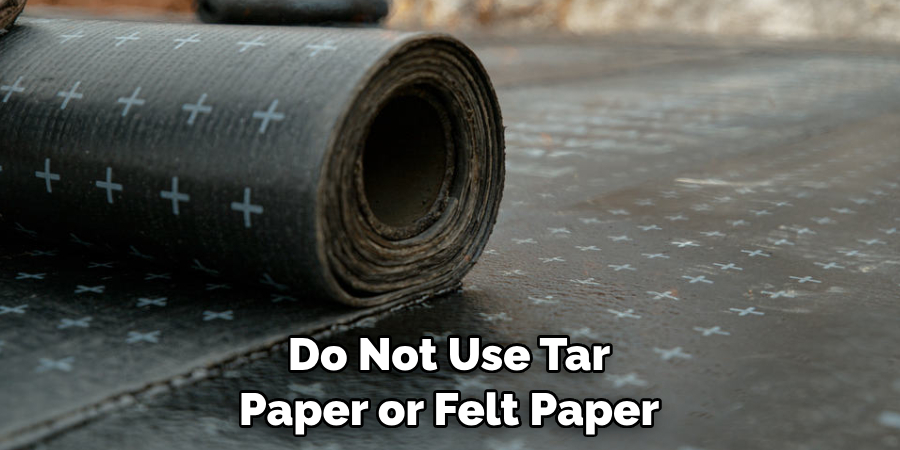
By avoiding these mistakes when insulating your ceiling without an attic, you’ll be sure that your home remains energy efficient and comfortable all year round! With the right insulation solutions and techniques, you can ensure that your ceilings remain properly insulated even in the absence of an attic space above them.
What Are the Three Main Types of Ceiling Insulation?
Three main types of insulation can be used for insulating ceilings without an attic: spray foam, rigid foam board, and fiberglass batting.
1. Spray Foam Insulation is one of the most effective and popular options for insulating a ceiling without attic access. It’s easy to apply, provides excellent thermal protection, and also acts as an effective soundproofing option due to its air-tight nature.
2. Rigid Foam Board Insulation is another great choice for ceilings without an attic space above them. This type of insulation comes in large sheets and can be cut to fit the size of your ceiling, providing good thermal protection as well as soundproofing capabilities when installed properly.
3. Fiberglass Batting is often used in areas where attic access isn’t possible, as it’s a relatively inexpensive material that can easily be installed between the joists of your ceiling. It provides some thermal protection but won’t be as effective as the other two options.
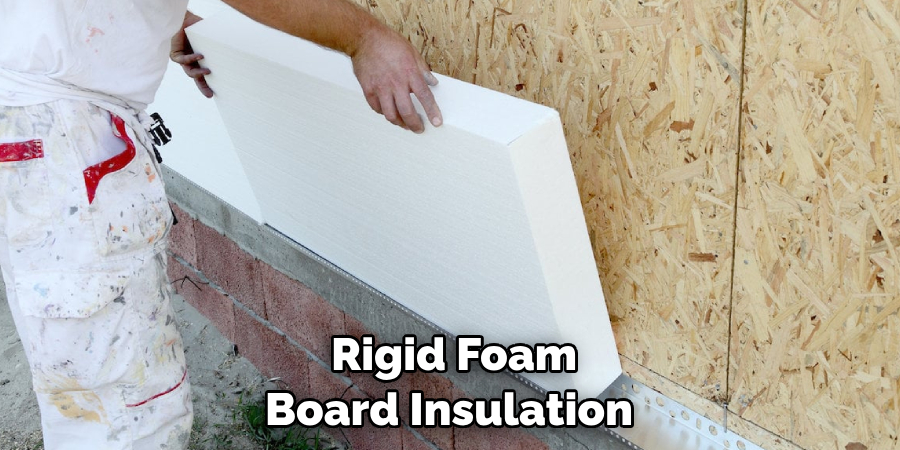
By understanding the three main types of insulation for ceilings without attics, you’ll be able to make an informed decision about what’s best for your home and budget! With these tips and tricks, you can ensure that your ceilings are properly insulated even in the absence of attic space above them.
Conclusion
Insulating your ceiling without an attic is an easy task. It does not require expensive materials or extensive labor, but it requires proper preparation and knowledge of what materials to use according to the layout of your roof structure. Although working on a low-heat source creates some difficulty in keeping the heating system safe, there are ways to counteract it by insulating the ceilings with foam boards and other insulation materials.
You can also use thermal mass to reduce indoor temperatures during summer days. Therefore, as long as you take the necessary precautions and implement effective methods, you can easily insulate your ceiling without attic access. Before engaging in this type of project, however, always prioritize safety. And as always, consult a professional insulation contractor if needed for more expert advice and assistance!
Hopefully, the article on how to insulate ceiling without attic has helped you understand the various approaches to this type of project. Now that you better understand what needs to be done, start insulating your ceiling and enjoy a more comfortable home with improved energy efficiency!
